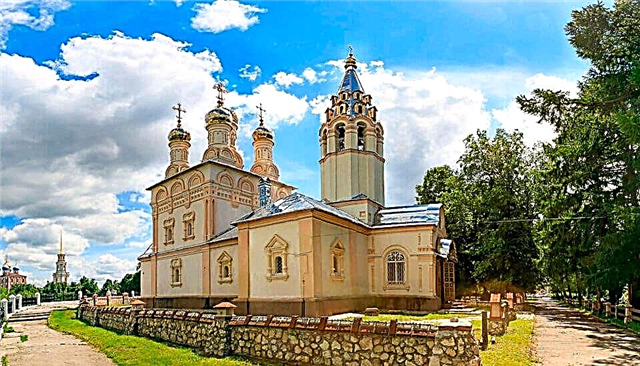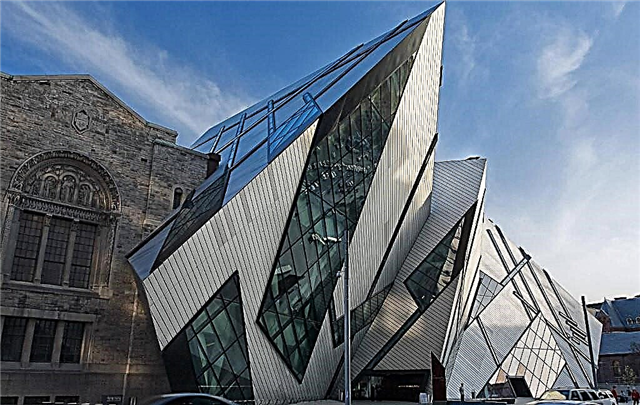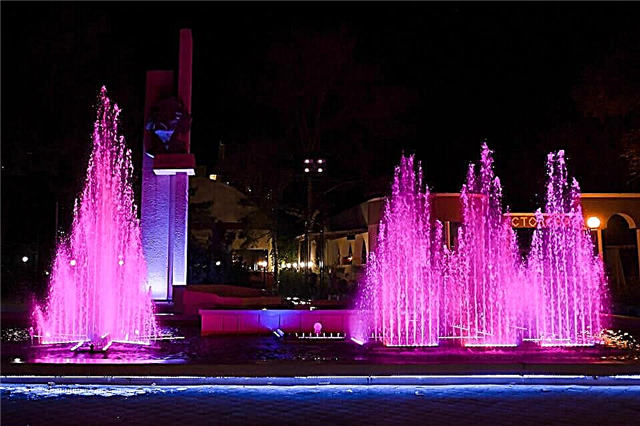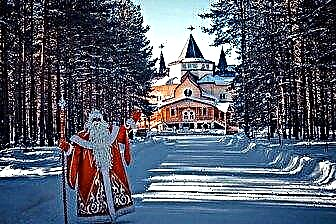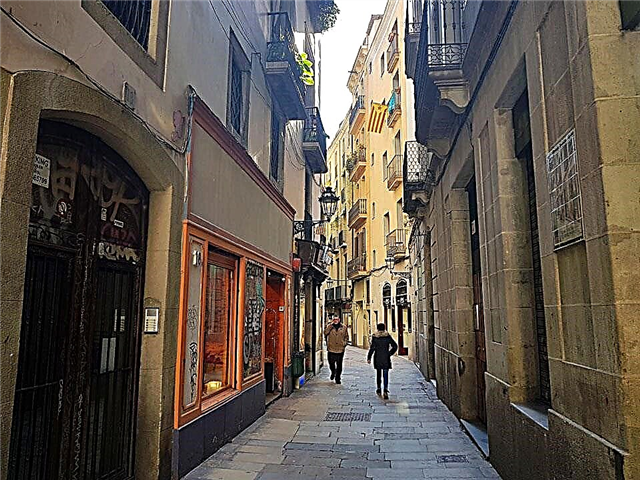Spain is not only a wonderful climate, a high level of service and a wonderful beach holiday, but also a rich excursion program. How many "pearls" of history, architecture, culture are hidden only in Barcelona. She surprises at every step. And even if you come here for a long time, you still may not have time to get to know all of its wonders. It is very difficult to pinpoint the most interesting places in Barcelona, and yet it is worth trying.
Gothic Quarter

This is one of the most important places in Barcelona. The Gothic Quarter is located in the city center, there are not only many attractions, but also cozy cafes, so there is a place to sit and relax. Once upon a time there was an ancient Roman city surrounded by a high wall. Later, in the 5th century, the conquerors destroyed everything here to the ground. The buildings that tourists can admire today date back to the 14th century and later.
The Gothic style creates a certain atmosphere. The beginning of the quarter can be considered the Plaza Nova (New Square), which appeared here in the middle of the 14th century. Once upon a time there was a brisk trade in slaves. Nothing remained of the fortress walls that were here, except for the towers. Here you can also see the Bishop's Palace, built in the Baroque style. A relatively modern building - the Collegium of Architects, in the creation of which Pablo Picasso had a hand.
The House of the Archdeacon deserves attention, this ancient building was rebuilt more than once, and today features of various architectural styles can be noted in it, now the documents of the city archive are kept here. It is worth walking along the central street of the famous quarter - Episkopskaya. Look at the Canons' House, which has a unique layout. And, of course, bow to the majestic cathedral, erected in honor of the young Eulalia, who was executed for her Christian faith.
Sagrada Familia

It is rare to find a cathedral with such an interesting history. And the point is not only that it is still under construction. The temple was laid in 1882, and in the end, it should become what the great architect Antoni Gaudí intended it to be. For him, this temple became the work of a lifetime, although orders poured on Gaudí from all sides. Interestingly, another person began to build the temple, Gaudí was entrusted with the work later.
According to legend, one of the main customers had a dream that a man with blond hair and blue eyes would build the cathedral. Gaudí fit this definition. He used such innovative architectural techniques that contemporaries did not believe in the strength and durability of his work. He said that he takes nature as a model, tall, powerful and harmonious trees that God created. The high columns of the cathedral, stretching into the sky, are impressive, and the capitals look like branches. Gaudi died in 1926 - hit by a tram.
In the 30s, the anarchists destroyed his drawings, which were supposed to guide those who were to complete the construction of the cathedral. In its final form, it should have three facades. Now two of them are ready - the Nativity and the Passion of the Lord. It remains to build a third - in honor of the Ascension of Christ. The cathedral turns out to be of wondrous beauty. Gaudí dreamed that when the wind blows, as a result of resonance, people who are near the numerous towers of the cathedral will hear the Music of the Creator.
Mount Tibidabo

This mountain offers stunning views of Barcelona, so it is definitely worth climbing here. At the end of the 19th century, it was decided to build a Catholic church here. But, like many objects in Spain, it has become long-term construction. Initially, a neo-Gothic chapel was erected. It has survived to this day. It was planned that there will still be an observatory, but later it was decided to build it in another place. The temple of the Sacred Heart itself was erected for 60 years, and it was completed only by 1961.
Its architecture is unusual - it definitely consists of two churches, stacked one on top of the other. Going inside, you can see beautiful stained-glass windows - one of them depicts the moment when Jesus Christ is tempted by the devil, sculptures of saints are also exhibited here, below - in the crypt - rich paintings. But tourists climb Tibidabo not only to visit the temple. There are excellent observation platforms, one of which is located on the TV tower. The Tibidabo Park also attracts guests. Here you can ride amazing attractions. The location of the park also speaks in favor of the park.
Riding a roller coaster and at the same time admiring the opening panorama is worth a lot! At one time this place was called "Children's Paradise". Today, children and adults can ride both modern and ancient attractions. For example, there is a metal tower with cabins - in them guests can climb 50 m, this tower was built at the beginning of the last century. Over time, the Ferris wheel, and cars, and the "Palace of Light", as well as many other things, appeared here. Visitors to the park willingly buy talismans as souvenirs - figurines of a good witch.
Park Guell

Initially, Eusebi Güell planned to equip a green residential area here, a kind of garden city. However, plots of land were not popular here - rich people believed that this place was far from the city center. Work began in 1901. The slopes of the hill were strengthened, pavilions were erected at the entrance, and later an architectural masterpiece appeared - a winding bench. Several mansions were also built. One of them was intended for Antoni Gaudi - now there is a museum dedicated to him.
However, due to material problems, Guell sold the land to the mayor's office, and a city park was located here. Today, visitors admire the houses at the entrance (they have fantastic shapes), visit the "Hall of a Hundred Columns", and a long bench curved in the shape of a sea serpent. You can walk freely along the numerous footpaths, admire the bizarre architecture of the park, visit the Gaudi House Museum.
Casa Batlló

Another work of the great architect Antoni Gaudi. The house was built in the style of modernism. It is so popular that it is difficult to count the number of people who visit it every year. Something like a million. Gaudi worked on this project for about two years. It was here that the inimitable handwriting of the master was developed.
It was assumed that the old building will be demolished, and in its place will be a tenement house for the tycoon Batlló. But Gaudi decided to do everything differently, and carried out the reconstruction of the existing building. He used ceramic tiles, as a result of which chiaroscuro began to play, completed the basement and terrace, as well as the attic and arches. The work resulted in a real architectural masterpiece. Later, this house belonged to the Bernat family, and since the mid-90s of the last century it has been a museum. Various events dedicated to Antoni Gaudi are held here.
Mila's house

Another masterpiece by Antoni Gaudi, and his last "secular" work. After that, he devoted all his efforts to the construction of a cathedral in honor of the Holy Family. And the spouses Mila-i-Caps ordered him to build this house. They wanted the view of their mansion to capture the imagination of the people of Barcelona. There is no doubt that Gaudi succeeded.
Although he did not complete the work due to disputes with the customer, other people did. Either way, Mil's house is amazing. Gaudí, as always, took nature as a model. The building resembles a rock washed by the sea, it seems that everything here flows, everything changes. This impression is created due to the fact that the architect gave the outlines of the house smooth forms, and the metal gratings resemble algae. The courtyards, where the windows of the utility rooms open, are also round or oval in shape.
The walls are covered with paintings.The owners' chambers "look" to the street. The attic looks very impressive, where there is now a small museum telling about the life and work of Gaudí. An unusual innovation is the brick arches that support the roof. You can go directly from the attic to the terrace. Here you will see turrets and columns, sculptures and mosaics. Equipped in the house and a museum apartment - you can see how the bourgeoisie used to live.
Boqueria market

This is a historical place - for the first time they began to trade here in the 13th century. However, it was only in the middle of the 19th century that a market building was built here, and it was covered with a metal roof in 1914. Visiting the market will be beneficial for those who have come to Barcelona and settled in apartments with their own kitchen. In Boqueria, you can buy the freshest meat and fish, vegetables and fruits, without any preservatives and at very low prices.
You can come here by car, leave it in the parking lot, take a special cart and hurry to get some food. Although the market opens at 7 o'clock, it is better to come a couple of hours later so that all traders get to work and there is more choice. If you stop by Boqueria to buy something as a souvenir, there will be less choice. However, it is definitely worth bringing nuts and spices from here. And of course, you can come to this place just to appreciate the magnificent historical market.
Almost any type of meat, fish - fresh from the sea, oysters and various delicacies, a variety of southern fruits and vegetables - all this, gathered under one roof, makes a stunning impression. Although it is customary to bargain in the market, you should not hope that you will be given a big discount here. Prices are already much lower than in stores, and the quality is higher. If you want to try something out of the ordinary for you, such as oysters, it is better to seek advice from the sellers so that they can tell you which delicacies to buy.
Monastery of Montserrat

The old Benedictine monastery is located in the mountains, 50 km from Barcelona. You can go upstairs by rail or cable car. Here you will admire the picturesque limestone cliffs with bizarre shapes, walk along special hiking trails. They are all well-groomed and safe. In the 9th century, there were several sketes on this site, in the 11th century a monastery was founded. In the 16th, a new Renaissance cathedral was consecrated.
In the 19th century, the monastery buildings were destroyed during the invasion of Napoleon's troops, little survived. Restoration work began three decades later. In the 20th century, during the brutal dictatorship of Franco, only in this monastery were services in the Catalan language. Today the monastery buildings are a mixture of different styles, but most of all there are traces of modernism. The Holy Virgin Mary of Montserrat appears before the believers on a throne made of cast silver. Every day the boys' choir sings a hymn to the Mother of God.
Another shrine is also kept here - the statue of the Virgin Mary, made of black poplar. Art critics attribute it to the 12th century. This statue is called the "Black Madonna", and the people call it "The Dark One". Pilgrims from around the world come to worship the Black Madonna. There is also a museum on the territory of the monastery. Here you can get acquainted with archaeological finds, look at icons and jewelry, as well as beautiful paintings and sculptures. In particular, you can see the works of Monet and Degas, Picasso and Dali, as well as other famous artists.
Citadel Park

The park is located in the old part of the city and is a real open-air museum. The history of its appearance is interesting. In the 18th century, the city was captured by King Philip the Fifth, and in order to retain power over Barcelona, he ordered to build a fortress here. Naturally, all the houses at the construction site were demolished. In the 19th century, the citadel ceased to play its role, most of it was destroyed, and a park was laid out on the liberated territory.
Later, many interesting objects appeared in it. Today the park occupies about 30 hectares; you can visit it any day of the week. The Arc de Triomphe located here, decorated with coats of arms, and sculptures representing the branches of the economy are beautiful. A lot of flowering trees and shrubs make an impression, there is also a large lake in the park - fish live in it, waterfowl gracefully glide on the surface. The wonderful fountain Cascada attracts attention; young Antoni Gaudi had a hand in its creation.
Another must-see is the Castle of the Three Dragons, a square building topped with towers. It houses the Museum of Zoology. In the southern part of the Citadel, there is a zoo, where many animals and birds live. The inhabitants take part in the performances that take place here every day. The Dolphin Show is especially interesting. Also on the territory of the park are the Museum of Geology and a glazed gallery, where exhibitions are held in winter.
Fortress Montjuic

This fortress is inextricably linked with the history of Barcelona. Once there was only a watchtower. The fortress itself was built in 1640, when the inhabitants of Catalonia rebelled against the ruling Habsburg dynasty. Later, in 1705, the fortress was briefly captured by the British, this happened during the War of the Spanish Succession. Several decades later, the reconstruction of the fortress began. It was clear that in order to fulfill its purpose, it must be strengthened. The area of the barracks increased, the number of guns increased, and a deep ditch was dug.
But all this did not help when, in 1808, Napoleon's troops approached the fortress and captured it. During the Franco dictatorship, there was a military prison in the fortress. Luis Companis, the head of the Catalan government, was shot there. Then a museum was opened here. Today you can come here on foot or climb using the cable car. The fortress looks impressive; it also offers a beautiful view of Barcelona.
Zoo

The zoo, which has already been mentioned, is located in the Citadel Park. Today it is home to over 300 species of animals; you can also see rare plants here. Since the territory is quite vast, you can move around not only on foot, but also by tram or bicycle. This offer will especially interest parents with children. The age of the zoo is quite respectable, it was founded at the end of the 19th century.
Moreover, it was immediately decided to arrange it in an unusual way: the animals are separated from each other and from visitors by ditches with water. This contributes to the fact that the inhabitants look as if they are in their natural environment. The staff of the zoo in Barcelona are doing a lot of scientific work. For example, otters were quarantined here, which were then released in the northeastern part of the country, restoring the natural habitat of this species. The expositions of the menagerie are interesting.
Here are the inhabitants of palm forests, rare birds, gorillas, aquatic animals, even "dragons", that is, monitor lizards. Pleasing to the eye and beautiful sculptures. It is worth recalling that it was in the Barcelona zoo that the only albino gorilla in the world lived for many years. During his life, Snowball left dozens of descendants.
National Art Museum of Catalonia

A very beautiful and relatively young palace, which attracts attention from a distance with its high towers. It was built in 1929 - at that time the World Exhibition was held in Barcelona, here, in front of the palace, the king opened it. Since the mid-30s, the palace has been a museum. First - the art of Catalonia, then it became the National Museum of Art of Catalonia. Its appearance also changed - the features of modernism disappeared, and it was replaced by neo-baroque.
The sections have been fully operational since 2004. The visit to the museum will be very comfortable. Magnificent halls, coolness, even when outside the walls - summer heat, soft carpeting, audio guides, comfortable sofas for guests to relax, a cafe and a souvenir kiosk - all this will delight sightseers.If you want to learn more about the exhibits on display, you should book a tour led by a museum employee, who will answer all your questions.
What cultural treasures can be seen in the museum? This is a unique collection of Romanesque painting, furniture, which was made by the great Antoni Gaudi, works of art related to modernism, avant-garde, romanticism and other trends. There are hundreds of thousands of exhibits here, so it's no surprise if you can't see everything in one day.
Spanish village

Another architectural object is the open-air museum, which was built for the beginning of the World Exhibition. The idea was implemented so successfully that later similar projects were implemented in other countries. The architects and artists who created the park traveled a lot around the country, adopting the most interesting town and country houses. Further, on a relatively small area of the park, they erected over 100 buildings in different styles.
Most of them are built in full size, and only a part is reduced. The materials were taken the same that were used to create prototypes. Moreover, the architects did not pursue the goal of building all the iconic architectural masterpieces of Spain here. They wanted guests to appreciate the variety of styles that are characteristic of different regions of the country during a short walk. There is also the main square, which represents the market squares of Spain, a 16th century Renaissance palace, a neoclassical mansion, a farmhouse, and much more.
Workshops of artisans are located here - guests can get acquainted with the process of making pottery, jewelry, glass and other products, buy something as a keepsake. In the evenings, life here is even more lively, performances are held, for example, you can see the Spaniards dancing flamenco.
Basilica of Santa Maria del Mar

According to legend, the apostle James once preached on the site where the basilica now stands. The first mention of a temple built here dates back to the 10th century. But this church has not survived to this day. And today, guests of Barcelona admire the basilica, built in the best traditions of the Gothic. The place is one of the most visited in the city, and many newlyweds play weddings here.
The basilica was built in the 14th century according to the design of Berenguer de Montagu. Since then, it has been destroyed several times. This happened as a result of fires, earthquakes, wars. Of course, not only the building itself suffered, but also the works of art that were in it. Thus, the civil war of 1936 caused great damage to the basilica.
The final restoration work was completed only by 1990. It is better not to limit yourself to a walk around the basilica, but go inside. You will see the main nave, admire the stained glass windows through which light streams, and perhaps hear the historic organ, which has also been restored. You can book an excursion and go upstairs. You will hear the story of the construction of the temple and walk to a stunning view of Barcelona.
Orth's Labyrinth

The Spaniards cherish this oldest garden - here you can not only admire rare flowers, fountains and sculptures, but also listen to music. The number of guests is limited so that nature does not suffer from an excessive influx of tourists. The idea of creating the park belonged to the Marquis Anthony Desvalls, then several more architects joined in his project. The park was named after the area where it is located.
Horta was handed over to the city authorities in 1967, and the park needed restoration. Now a number of restrictions are imposed on visitors: for example, you cannot ride bicycles here, sit on a picnic, and so on. The guests are impressed by a labyrinth made of living cypresses. You can really get lost in it. Once in the very center of the labyrinth, you will see the site where the statue of Eros is installed.
There is also a large picturesque pond in the park, which is fed by an underwater source, a beautiful waterfall. There are many rare trees, shrubs and flowers growing here. A special note is made by conifers, of which there are also many. The air, thanks to them, seems especially clean. In the warm season, the park closes at 20:00, in winter - one hour earlier. There is no admission fee on Mondays and Wednesdays.
Monastery of Pedralbes

The monastery is located in a prestigious area where the mansions of the city's richest people are located. There are also many green spaces here. Pedralbes was built in the first half of the 14th century, by order of the queen. Therefore, the complex turned out to be truly luxurious. The best masters of Spain worked on the decoration of the premises. One of the cells was intended for a relative of the royal family - it is decorated with magnificent paintings. The octagonal tower is also admirable.
Tourists love to wander around the monastery garden - it seems like the 14th century has lingered here. The design traces the features of the Gothic. Tangerine trees, a well, a fountain - it all looks very picturesque. You can sit on one of the benches, enjoying the view.
Camp Nou stadium

This stadium of FC Barcelona has gained worldwide fame, although it was built relatively recently - in 1957. A 5-star UEFA rating is a testament to the recognition. Only a few stadiums have such a status on our planet. Therefore, even if you don’t buy a ticket for a football match, it’s worth coming here for an excursion. Please note - it is held without any guides. You will have the impression that you have just been in the "behind the scenes". The excursion also includes a museum and a multimedia center.
You yourself will understand the scheme of the stadium, you can ask for help from employees, security guards. They will tell you how to get to this or that place. You will see various exhibits along the way. Usually, the journey begins with a visit to a virtual stadium, as if you are attending a match, especially for children. You can also look into the dressing rooms, see the spa where the players relax, the meeting room and the chapel where the players pray before going out on the field. In short, a lot of interesting things await you.
Park "Catalonia in miniature"

This open-air park-museum is located 12 km from Barcelona. It is definitely worth coming here. The cost of tickets is low, the walk will take about 2.5 hours. But you can see miniature copies of the most famous rear of Catalonia. Among them there are both historical sites and houses, reflecting the whole variety of architectural styles in this part of Spain. The park was opened in 1983; today you can see almost 150 miniature buildings here.
All of them were made by craftsmen by hand. You will see the Sagrada Familia, Park Guell, the Salvador Dali Museum, and much more. The choice is great. Someone will like ancient castles and churches more, while others will like a stadium or an airport. There are working models: cars and trains drive, skiers drive down the slopes, and so on. You can get around the park on foot or take a mini-train with only two carriages. Such a trip will be very convenient for parents with small children.
Cathedral of the Holy Cross and Saint Eulalia

This is the main cathedral of the city and is the seat of the archbishop. Young Eulalia died from the persecutors of Christians. In the 7th century, she was canonized. On the site of the cathedral there used to be a Romanesque church. It was destroyed, and in the 13th century the construction of the cathedral began. Its construction was delayed for many years. The facade was decorated only at the end of the 19th century, the high spire appeared even later. The cathedral is an example of the Gothic style.
Despite its large size, both inside and outside the building looks very light and airy.Stained-glass windows are beautiful, through which multi-colored rays of light pour in, a large space is allocated for the choir. In the cathedral, in a sarcophagus made of alabaster, the relics of Saint Eulalia are kept. Each of the 26 chapels is a work of art, the altars are richly decorated. You can also listen to the organ from the 16th century. The inner courtyard of the cathedral has a fountain and a lovely garden.
Rambla street

This is the central street of Barcelona, its length is over a kilometer. It is worth going through it - from Plaza Catalunya to the Columbus monument. When in the 18th century Barcelona began to expand its borders, the fortress walls were destroyed, and the townspeople were able to walk here. This is how the Rambla came about. While walking, you can see a lot of interesting things. For example, the Canale̒tes fountain, with which many signs are associated (football players especially love it). The famous Boqueria market is also located here.
The Miro Mosaic, the Liceu Opera House, the Royal Square with the wonderful fountain “Three Graces”, the Güell courtyard - all this is the Ramblas. The street is mainly pedestrian, there is little public transport, it moves along special narrow paths, so you can walk freely. Here are some amazing places to visit in Barcelona, one of the most beautiful cities in Spain. Don't miss the opportunity to see them.

